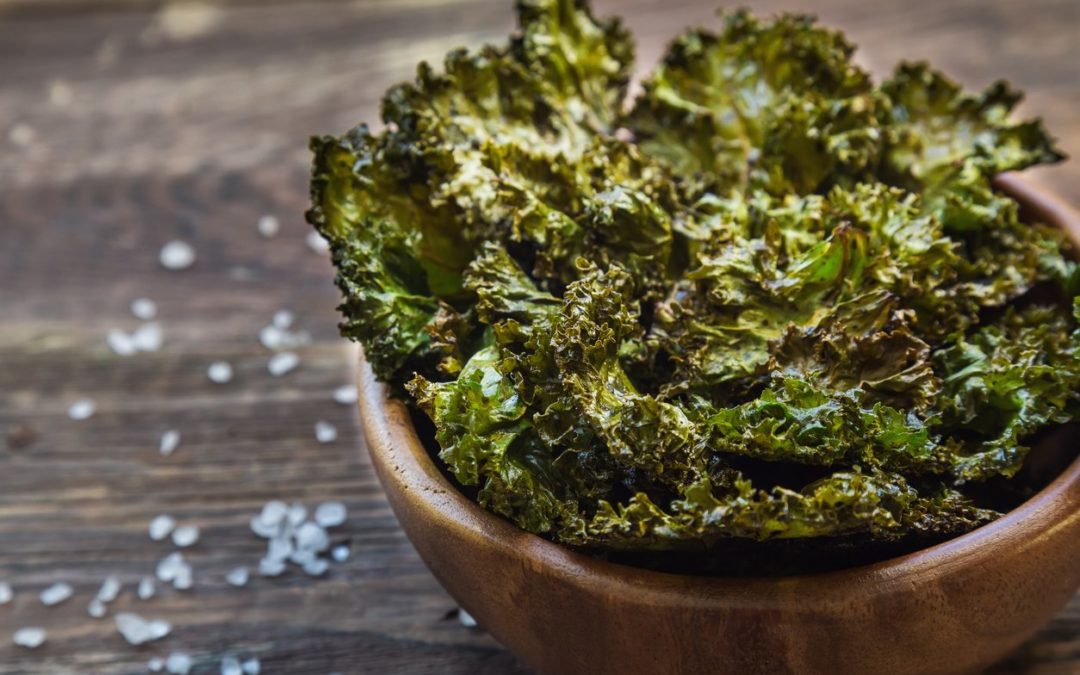(Image sourced form Parade)
By Kaitlin Vogel / June 5, 2021
Yes, all veggies are healthy, but kale is in a league of its own. A well-known nutritional powerhouse in the wellness world, nutritionists and dietitians highly recommend incorporating kale into your diet whenever possible.
Part of the cruciferous vegetable family—Brussels sprouts, broccoli, collard greens, etc.—kale can be found anywhere from your local grocery store to a farmer’s market. It comes in many forms: curly kale, dinosaur kale, redbor and Russian kale.
Kale nutrition facts
Here is a breakdown of what makes this leafy green veggie so good for us: *Per one cup raw
- Calories: 34 calories
- Protein: 2.2g
- Total carbohydrates: 6.7 g
- dietary fiber: 1.3 g
- Total fat: .5 g
- Vitamin A: 206% DV
- Vitamin C: 134% DV
- Vitamin K: 684% DV
- Thiamin: 5% DV
- Riboflavin: 5% DV
- Niacin 3% DV
- Vitamin B6: 9% DV
- Folate: 5% DV
- Vitamin B12: 0%
- Pantothenic Acid: 1% DV
- Calcium: 9% DV
- Iron: 6% DV
- Magnesium: 6% DV
- Phosphorus: 4% DV
- Potassium: 9% DV
- Sodium: 1% DV
- Zinc: 2% DV
- Copper: 10% DV
- Manganese: 26% DV
- Selenium: 1% DV
10 Benefits of Kale
With a glance at the nutrition facts, it’s clear that kale is packed with vitamins and minerals. But we chatted with nutritionists to get more information on what, exactly, makes kale so great.
It’s Nutrient-dense
Kale has a ton of nutritional value for the mere 34 calories in a cup of raw kale. It is one of the most nutrient-dense of all vegetables, says Dr. Stacie Stephenson, Certified Nutrition Specialist and CEO of VibrantDoc.
Holly Klamer, MS, RDN, adds: “A cup of chopped kale only has about 30 calories but provides over 100% Daily Value (DV) for vitamin A and vitamin C, says. Both these vitamins act as antioxidants protecting body cells from damage and potential carcinogens.”
It Fights Disease
Like other cruciferous vegetables, kale contains sulforaphane, a type of glucosinolate that seems to have anti-cancer, anti-diabetic, and pro-heart effects, Dr. Stephenson states. Sulforaphane is maximized by cutting kale and letting it sit for 40 to 90 minutes before eating. Consume raw or cook it only lightly to avoid reducing the sulforaphane content.
It Supports Liver Function
Kale contains glucosinolates (including sulforaphane) which are sulfur-containing phytonutrients that break down during digestion into isothiocyanates and indole-3-carbinole, which help your body produce enzymes your liver uses in the secondary phase of its detoxification process, says Dr. Stephenson.
In other words, kale contains compounds that help your liver process things like alcohol, prescription drugs, and agricultural chemicals, so they don’t harm you.
Kale is High in Fiber
Eat the stems: They have more fiber than the leaves, and fiber feeds the beneficial bacteria in your microbiome. Slice the stems very thinly and add to vegetables sautés and soups for texture, or add them to your green smoothie, Dr. Stephenson recommends.
It’s Anti-inflammatory
Kale contains anti-inflammatory compounds, Dr. Stephenson explains. These compounds include isothiocyanates and indoles, which reduce inflammation through several complex biochemical processes, such as by inhibiting nuclear factor-kappa B activity and modifying pro-inflammatory cytokines.
Kale Helps Lower Cholesterol
Kale contains substances that bind with bile acids so they don’t get reabsorbed in the bloodstream and turned into cholesterol. Studies have shown that kale can increase HDL (“good”) cholesterol, lower LDL (“bad”) cholesterol, and that steamed kale is nearly as powerful as cholesterol-lowering drugs that perform a similar bile-acid-binding function, says Dr. Stephenson.
Kale Supports Your Vision
Carrots aren’t the only veggie that is good or eye health. Kale also contains phytonutrients called carotenoids, especially lutein and zeaxanthin, which are especially good at protecting the lens of the eye from oxidative damage that comes from blue light, Dr. Stephenson states. This could prevent macular degeneration as you age.
Kale is Rich in Vitamin K
Kale contains 684% of the recommended daily allowance of vitamin K, which is essential for building bones and teeth as well as for making sure blood clots appropriately, Dr. Stephenson explains. It’s especially important for heart health because it keeps arteries from calcifying by directing calcium into bones and teeth and away from arteries. This also helps keep bones dense and teeth strong.
Kale is Available Year-round
Some veggies and fruits are only available some of the time, or just don’t taste good during the winter months (hello. fresh tomatoes), but kale is tolerant to cold weather and a bit of frost actually makes kale taste sweeter, so kale is available all year long in fresh form, says Dr. Stephenson.
It’s Diverse
There are many different kinds of kale, so you can mix it up while still getting all the nutritional benefits. Curly kale is the most popular, but you can try sweeter lacinato kale (also called dinosaur or Tuscan kale), ornamental kale (people use it to make garden beds look beautiful but you can also eat it), and baby kale (more tender and good for eating raw), Dr. Stephenson explains.
It’s also good raw in a salad (try massaging tougher leaves with a little olive oil to make them more tender), lightly steamed or stir-fried, or added to soup, processed into pesto as a replacement for basil, used as a wrap (the leaves are sturdy), or baked into tasty chips. A leaf or two blended into your green smoothie is another way to get the maximum nutritional benefit from kale.
Let’s Eat!
Give These Tasty Kale Recipes a Try
Dr. Melina Jampolis, a physician nutrition specialist, shares two kale recipes with herbs and spices to improve your health and longevity:
Green Kale And Apple Slaw: 4 portions
Ingredients:
- 3 cups green kale, finely shredded
- 2 cups red cabbage, finely shredded
- 1 cup green cabbage, finely shredded
- 1 green apple cut into thin matchsticks
- ½ cup red onion peeled and thin-sliced
- ½ teaspoon celery salt
- ½ teaspoon paprika
- ¼ teaspoon turmeric, ground
- Kosher salt, to taste
- Ground back pepper, to taste
- 3/4 cup apple cider vinegar
- 3 tablespoon light mayonnaise
- 1 tablespoon dijon mustard
- 1 tablespoon honey
- 2 tablespoons olive oil
Method:
In a bowl, combine vinegar, mustard, honey and mayonnaise using a whisk. Mix well and slowly combine oil to form an emulsification. Next, add spices and mix well then add the rest of the ingredients and toss well. Season with salt and pepper to taste.
Spice Roasted Kale Portion: 2 portions
Ingredients:
- 1 bunch green curly kale, removed from stem
- ¼ teaspoon paprika
- ¼ teaspoon cumin, ground
- 1/8 teaspoon black pepper, ground
- 1/8 teaspoon chili powder
- 1/8 teaspoon garlic powder
- ¼ teaspoon kosher salt
- 1.5 tablespoon olive oil
Method:
In a mixing bowl mix together oil and spices very well and add kale leaves. If the leaves are too large, rip them in half and mix with oil spice mix very well till all leaves are evenly coated. Place on a sheet pan and bake at 350 for 12-15 minutes till crispy. Allow to cool and enjoy.


